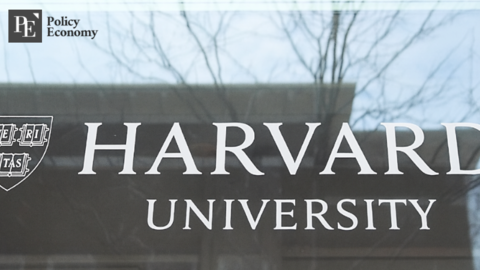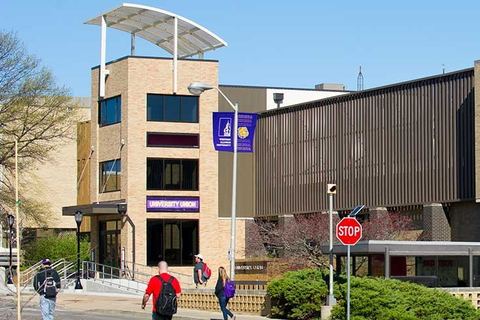With jobs hard to find, Young people in China turn their eyes to military academies
Input
Modified
"New Military Academies in China Draw Intense Interest from Youth" Once Dismissive Due to 'Poor Conditions,' Young Chinese Now Reconsider Enlistment Soaring Unemployment Triggers Shift in Perception of Military Careers

Perceptions of military academies among Chinese youth are rapidly shifting. As the job market freezes and unemployment soars, a once-avoided career as a soldier is emerging as an attractive option.
China’s Newly Established Military Academies Launched Amidst Surging Youth Interest
On June 23, the South China Morning Post (SCMP) reported that rising youth unemployment and various government incentives are driving growing interest among Chinese youth in joining the People's Liberation Army (PLA). According to the report, China’s Ministry of National Defense announced last month the establishment of three new military academies, which will begin recruiting high school graduates this summer. A related video garnered over 8 million views on the social media platform Weibo.
The newly established academies are: The Army Support College in Hefei, Anhui Province; The Information Support Force Engineering University in Wuhan, Hubei Province; and The Joint Logistics Support Force Engineering University in Chongqing
These institutions were formed by restructuring and consolidating divisions within existing military schools to modernize China’s military organization and talent cultivation system. Specifically:
- The Army Support College combines the former Armored Forces Academy and the Artillery and Air Defense Academy.
- The Information Support Force Engineering University merges the Information and Communication Department of the National University of Defense Technology with the Communication College of the Army Engineering University.
- The Joint Logistics Support Force Engineering University brings together the Army Logistics Academy, Military Transportation University, and its affiliated Automotive Academy.
The Information Support Force Engineering University will serve as the core training institution for the newly formed Information Support Force (ISF), established in April 2023. The school is expected to focus on cultivating talent with expertise in cutting-edge technologies such as drones, robotics, and artificial intelligence (AI). Meanwhile, the Joint Logistics Support Force at Engineering University aims to integrate logistics and transport systems across the country, enabling rapid joint operations and enhancing mobility. With logistics and support operations playing an increasingly critical role in modern warfare, the initiative seeks to develop both responsive structures and personnel capable of adapting to evolving battlefield conditions.
Until a few years ago, Military Academies Once Struggled with Enrollment
What’s particularly notable is that only a few years ago, military service was widely regarded as an undesirable career choice among Chinese youth. Since the Chinese Communist Party initiated military reforms in 2016, the number of student slots at China’s 27 military academies has steadily increased. From 2018 to 2021, the schools recruited an average of 13,000 students annually, with that number increasing by about 2,000 per year in both 2022 and 2023.
Yet despite the expanded capacity, applications remained sluggish. In 2023, even as the national college entrance exam (gaokao) drew a record-breaking 12.91 million test-takers, many military academies still failed to fill their quotas. Moreover, the gaokao scores of applicants to military institutions dropped significantly compared to previous years. For example, the National University of Defense Technology, often dubbed “the Tsinghua of the PLA," had a minimum admission score of only 514. Other institutions, such as the Army Service College and the Special Operations Academy, had minimum scores of 463 and below 400, respectively, on a scale where the maximum is 750.
This general avoidance of military academies stemmed largely from societal attitudes and concerns about compensation. Yang Taiyuan, a researcher at the Center for Integrated Science and Technology Strategy at Danjiang University, explained: “Although PLA salaries have risen in recent years, they are still low compared to incomes in more economically developed regions. This disparity creates a sense of disconnect between the standard of living at military academies and civilian life, making the military path less appealing to young people.”
He added that academic specialization also plays a role in shaping future prospects: “If a cadet is not in a science or technology-related field, they are more likely to be stationed in remote or border regions, where promotion opportunities are more limited.”

China’s Job Market on Shaky Ground
The abrupt shift in perception stems from growing instability in China’s job market. As attractive employment opportunities dwindle, the advantages of public-sector jobs, including military service, are becoming increasingly prominent. According to China’s National Bureau of Statistics (NBS), as of last month, the unemployment rate among urban youth aged 16 to 24 (excluding students) stood at 14.9%. This marked a 0.9 percentage point drop from the previous month’s 15.8%, yet remained higher than the 14.2% recorded a year earlier.
However, many analysts believe that China’s real youth unemployment rate significantly exceeds the official figures. Critics argue that the methodology used by the Chinese government to calculate youth unemployment is fundamentally flawed. Notably, in June 2023, when the youth unemployment rate hit a record 21.3%, the NBS suspended publication of the data for six months, citing a need to revise its methodology. Since the following January, the bureau has excluded students from the base population used to calculate the unemployment rate.
This approach contradicts international standards set by the International Labour Organization (ILO), which guide how labor statistics should be compiled. According to ILO guidelines, high school and university students who are seeking work or employed part-time are to be counted as part of the labor force, while only full-time students not actively seeking employment are excluded.
The criteria used to distinguish between employed and unemployed individuals have also come under scrutiny. Currently, the NBS classifies anyone aged 16 or older who worked for at least one hour during the past week for wages or business income as "employed." In effect, someone who worked just one hour of part-time labor in a week would be excluded from unemployment statistics. Critics argue this definition fails to capture the true earning conditions of workers and can lead to statistical distortion, where official economic data masks the underlying economic reality.





















